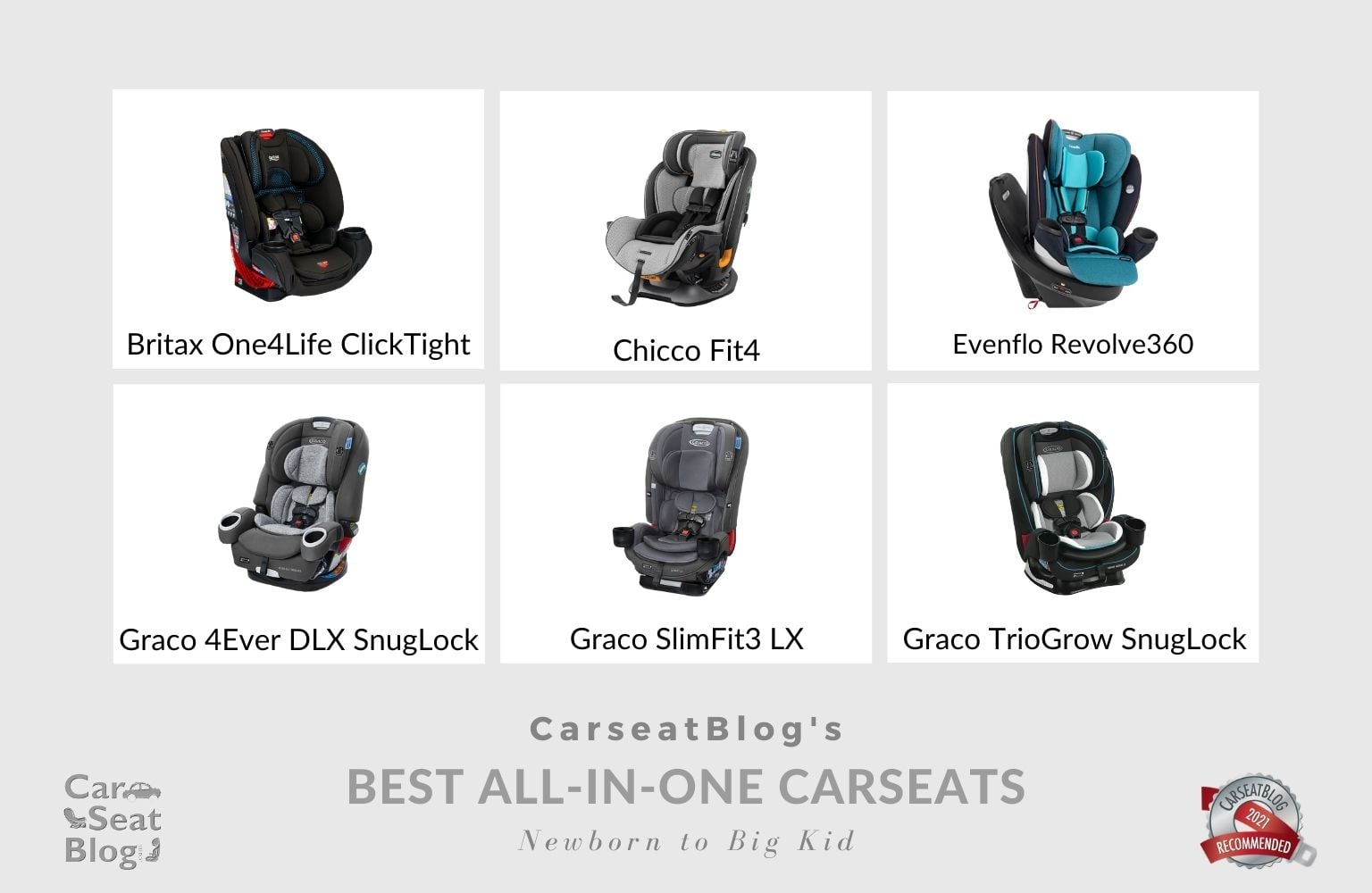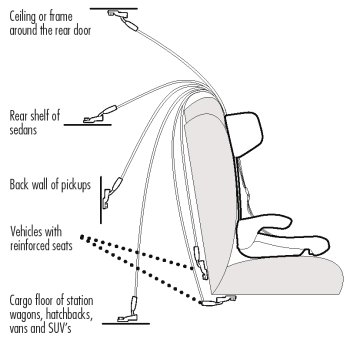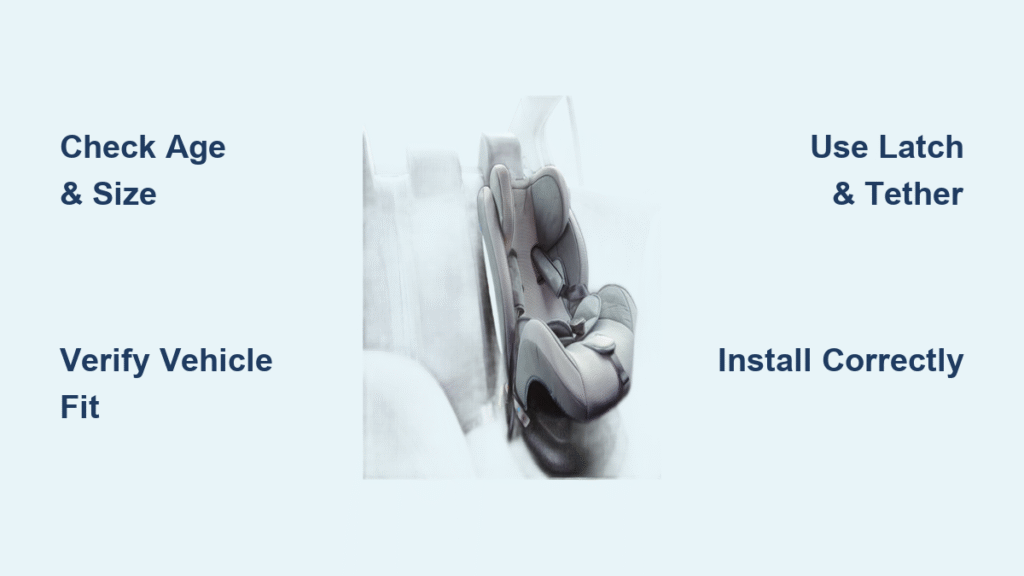Your baby’s first ride home from the hospital requires a properly installed car seat—and they’ll need one until age 10 or older. With National Highway Traffic Safety Administration data showing a 63% misuse rate in car seat installations, learning how to buy a car seat that fits both your child and vehicle is critical for safety. This guide cuts through the overwhelming options to deliver a clear, step-by-step process for selecting the right seat at every stage—from newborn carrier to booster graduation—so you can drive with confidence knowing your child is properly protected.
Selecting the Right Car Seat Type for Your Baby’s Age and Size

Infant Car Seats: Why They’re Essential for Newborns
Infant car seats ($70-$550) provide the safest transport solution for newborns with their rear-facing-only design and specialized newborn fit. Unlike convertible seats, these carriers feature a removable base that stays installed in your vehicle while the carrier snaps in and out for seamless transfers. The lightweight carrier (typically 8-12 pounds) makes it easy to move sleeping babies without disturbing them, and most integrate with stroller travel systems for convenient outings.
Critical sizing check: Your baby has outgrown their infant seat when their head sits less than 1 inch below the top of the carrier shell or they exceed the height limit (usually around 32 inches). Never force a growing baby into an ill-fitting seat—this compromises safety in a crash.
Convertible Car Seats: Maximizing Rear-Facing Safety
When your child needs more room, convertible seats ($60-$650) offer extended rear-facing capability up to 50 pounds—significantly enhancing safety compared to early transition to forward-facing. Research shows children are 5 times safer remaining rear-facing through age 2 or beyond. These seats transition to forward-facing with harness (up to 65 pounds) and eventually to booster mode in some models, but lack the convenient carrier feature of infant seats.
Pro tip: Look for models with adjustable headrests and harness heights that grow with your child without requiring rethreading—this saves time during growth spurts and ensures proper fit.
All-in-One Seats: The Long-Term Value Proposition
All-in-one car seats ($100-$450) promise coverage from birth through booster graduation, but their universal design often compromises newborn fit and infant convenience. While cost-effective over time, the bulkier size may overwhelm smaller vehicles and newborns, requiring additional inserts that can shift during use. These seats handle rear-facing (4-50 lbs), forward-facing (20-65 lbs), and booster mode (up to 120 lbs), but the trade-off is less specialized protection at each stage.
Reality check: The “one seat for everything” approach rarely delivers optimal safety at every phase—prioritize proper fit over long-term savings.
Critical Safety Features That Actually Matter in Car Seats
LATCH System: Proper Installation Without Seat Belts
The Lower Anchors and Tethers for Children (LATCH) system uses built-in hooks and straps to secure seats without seat belts in vehicles manufactured after 2002. While simplifying installation, LATCH has weight limits—switch to seat belt installation when the combined weight of child and seat exceeds your vehicle’s limit (typically 65 pounds). Always check your vehicle manual for anchor locations and specific weight restrictions.
Installation mistake to avoid: Never install a car seat in the front passenger seat with an active airbag—this is illegal in many states and extremely dangerous for children.
Top Tether: The Most Underused Safety Feature

Every forward-facing installation requires the top tether strap, yet NHTSA reports only 43% of parents actually use it. This critical anchor point connects the car seat shell to your vehicle, reducing forward movement and head injury risk by up to 45% in crashes. The tether works with both LATCH and seat belt installations but must be properly routed over the vehicle seat back to the designated anchor point—never attach to cargo hooks or unsecured vehicle parts.
Quick verification: After installation, give the seat a firm shake at the belt path—if it moves more than 1 inch side-to-side or front-to-back, reinstall tighter.
Five-Point Harness: Proper Positioning Saves Lives
All infant, convertible, and all-in-one seats use a five-point harness securing hips, shoulders, and between legs. Harness positioning rules differ based on direction: rear-facing seats require straps at or below shoulder level, while forward-facing seats need straps at or above shoulders. The chest clip must sit at armpit level—not belly button or neck height—and straps should be tight enough that you cannot pinch excess webbing at the shoulders.
Pinch test: After buckling your child, try to pinch the harness webbing at collarbone level—if you can pinch fabric, tighten further before every ride.
Smart Budgeting: How to Buy a Safe Car Seat Without Overspending
Price vs. Safety Reality: What Research Shows
Higher prices don’t guarantee safer seats—Consumer Reports testing consistently shows mid-priced models ($100-$200) often perform as well as or better than premium options in crash tests. Premium features like plush padding, cup holders, or luxury fabrics enhance convenience but don’t improve crash protection. Focus on proper fit and installation rather than fancy extras.
Budget breakdown:
– Under $100: Basic convertible seats and backless boosters (adequate but fewer comfort features)
– $100-$200: Quality convertibles with side-impact protection (best value for most families)
– $200-$300: Premium convertibles with extended rear-facing capabilities
– $300+: Luxury models with advanced features (justified only for specific needs)
New vs. Used Decision Tree: Critical Safety Rules
Never buy used when:
– Seat history is unknown (purchased from garage sales or second-hand stores)
– Missing parts, labels, or instruction manuals
– Involved in any crash (even minor collisions compromise structural integrity)
– Subject to unaddressed safety recalls
– Has expired (typically 6-10 years from manufacture date)
Expiration check: Locate the manufacture date on the seat label—most expire 6-10 years after production regardless of crash history. Never use an expired seat.
Where and How to Buy Car Seats for Maximum Safety and Value
Online Shopping Strategy: Avoiding Common Pitfalls
Major retailers like Target and Walmart offer limited in-store selection but extensive online options. Specialized retailers (Albee Baby, Amazon) provide comprehensive brand choices with free shipping on car seats. Always verify return policies—allow at least 2 weeks for trial installation and potential returns, as many seats don’t fit certain vehicles despite appearing compatible online.
Online checklist:
– Order directly from trusted retailers or manufacturers
– Verify safety compliance labels upon arrival
– Check for shipping damage before accepting delivery
– Save all packaging for potential returns (some retailers require original packaging)
Mandatory Registration: Your Safety Lifeline
Complete and mail the registration card included with every seat within 10 days of purchase. This enables manufacturer recall notifications—NHTSA data shows only 10-30% of recalled seats are ever repaired or replaced. Your information is used exclusively for safety alerts, not marketing, and takes just two minutes but ensures you’ll know immediately about any safety issues.
Vehicle Fit Check: Ensuring Your Car Seat Works With Your Specific Model

Consult Your Vehicle Manual First
Every vehicle’s owner’s manual includes a child safety section detailing LATCH anchor locations, weight limits, and belt configurations. Research specific features like seat belt types, lower anchor spacing, top tether access, and head restraint positions that affect installation. Some vehicles have unusual seat angles or limited space between anchors that complicate proper installation.
Compatibility factors to verify:
– Seat cushion angle affecting proper recline
– Seat belt positioning and locking mechanisms
– Space between LATCH anchors (must match seat requirements)
– Head restraint interference with seat installation
Test Installation Before Final Commitment
Some retailers previously offered test installations—when buying online, ensure generous return policies for compatibility verification. Large seats may not fit small vehicles, and some seat belt configurations complicate proper installation. Install the seat in your actual vehicle before committing—don’t rely on store displays or online descriptions.
Installation Verification: Testing Your Car Seat Before First Use
Tightness and Positioning Final Checks
Your installed seat should pass the “inch test”—it shouldn’t move more than 1 inch side-to-side or front-to-back when tested at the belt path. Use your non-dominant hand for testing—if you can move it significantly, reinstall tighter. For rear-facing seats, verify proper recline angle using built-in indicators—too upright risks airway obstruction, too reclined reduces crash protection.
Harness tightness rule: After buckling, you should not be able to pinch excess webbing at the shoulders. Looser harnesses dramatically increase injury risk in crashes.
Angle Indicator Verification
Rear-facing seats require specific recline angles to prevent head slumping that could obstruct airways. Most seats have built-in level indicators—check these after installation to ensure proper angle. In newer vehicles with flatter seats, you may need rolled towels or specialized inserts to achieve the correct angle.
Warning: Never place aftermarket inserts or padding under or behind the seat that didn’t come with the car seat—they can compress in a crash and compromise safety.
When to Upgrade Your Child’s Car Seat: Age, Size and Readiness Signs
Transition Timing Guide
- Rear-facing: Keep children rear-facing until at least age 2 or until exceeding rear-facing weight/height limits (whichever comes first)
- Forward-facing: Continue with harness until exceeding the seat’s height/weight limits (typically 65 lbs)
- Booster seats: Use until your child can properly fit an adult seat belt (typically age 9-12, 57+ inches tall)
- Vehicle belt only: When child can sit with back against seat, knees bent at edge, and belt fitting properly across chest and thighs
Booster readiness test: Children must be mature enough to sit properly for the entire trip—fidgeting or slouching negates booster protection.
Replacement Triggers: When to Replace Immediately
Replace your car seat immediately after moderate to severe crashes using NHTSA guidelines. Also replace if damaged, expired, or after manufacturer’s specified lifespan (typically 6-10 years). Never reuse a seat that has been in a crash—even if damage isn’t visible, internal structural compromise may have occurred.
Making Your Final Car Seat Choice: The Safety Checklist You Need
Your perfect car seat balances your child’s current age/size, your vehicle’s compatibility, and your budget—not the longest-lasting option. Start with the stage your child needs now, not future stages. Remember: the safest seat is the one that fits your child perfectly, fits your vehicle correctly, and gets used properly every single time.
Final verification steps before purchase:
– Confirm proper fit with your child in the store
– Test installation in your vehicle before final commitment
– Check NHTSA.gov for current recalls on the model
– Locate a Child Passenger Safety Technician for professional installation help
– Register your seat immediately after purchase
Your child’s safety journey begins with this single decision—take the time to get it right. A properly selected and installed car seat reduces the risk of fatal injury by 71% for infants and 54% for toddlers—making how to buy a car seat one of the most important parenting decisions you’ll ever make.





